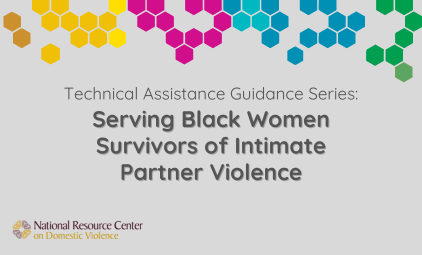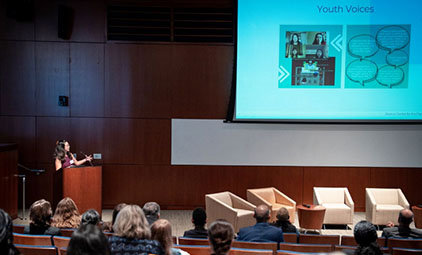It reports on four categories of sexual assault: forcible rape, forcible sodomy (includes oral and anal), sexual assault with an object (e.g. finger, bottle, handgun, stick, etc.), and forcible fondling. NIBRS definitions of these four forceable sexual assault categories are provided at the end of the paper. The report provides findings on the incidence of sexual assault, the victims, their offenders, gender, responses to these crimes, location type and time of incident, the levels of victim injury, victims' perceptions of offenders' ages, victim-offender relationships, cases of multiple victims in an incident; and other detailed characteristics.
The data indicated that the vast majority of sexual assault crimes that law enforcement agencies handle are against juvenile victims (67% of total reports). An arrest was only made in 27% of all the reported sexual assault victimizations. Some crimes reports were closed in what the FBI labels "clearance by exceptional means"; this meant that agency said the victim chose not to "cooperate" with a prosecution case (7% of reported assaults, and usually adult cases), or, the prosecution decided not to press charges(6% of reported assaults, and usually when the prosecution thinks there isn't enough hard evidence).[p.11]
With a focus on youth experiences, statistics on sexual victimization as reported to law enforcement agencies in these twelve states included information:
About the victims:
- TYPE OF ASSAULT: Of all the reported sexual assault incidents, 42% were forcible rapes, 8% were forcible sodomy, 4% were sexually assaulted with an object,and 45% were forcibly fondled [p.2];
- AGE: 67% of all these victims of sexual assault were juveniles (under the age of 18); more than half of the juvenile victims were under the age of twelve [p.2]; "One of every seven victims (or 14% of all victims) of sexual assault reported to law enforcement agencies was under age 6"; "for victims under age 12, 4-year-olds were at greatest risk of being the victim of a sexual assault." [p.2]
- GENDER: "Nearly all forcible rapes (99%) involved a female victim." [p.4] Males were at highest risk for being sexually assaulted at age 4; females were at highest risk at age 14. [p.4]
- SINGLE INCIDENT, MULTIPLE VICTIMS (& AGE): One in five juveniles were victimized in incidents with more than one victim. [p.13] For every type of sexual assault, "juvenile victims were more likely to be victimized with others than were adults." [p.5] Victims age 6-11 were more likely to be victimized with others than younger (under age 6) or older (age 12 or older) age groups. [p.5]
About the Offenders:
- GENDER: 96% of all the sexual assault offenders were male.
- AGE: 76.8% of those who perpetrated sexual assaults were adults; 23.2% were juvenile perpetrators with 19.5% of perpetrators between the age of 12-17. [p.8]
- AGE: Adults perpetrated 60% of sexual assaults against youth under age 12. [p.13] 40% of the offenders who victimized children under age 6 were also juveniles (under the age of 18). [p.8]
- RELATIONSHIP: 27% of all offenders were family members of their victims; family members were perpetrators of 34% of sexual assaults against juveniles. 49% of the victims under age 6 were sexually assaulted by a family member. [p.10] Strangers were rarely the perpetrators in cases of juvenile sexual assault; [p.13]
- PROFILING EXAMPLES: Given all findings, if a victim under age 6 was assaulted in a residence, there is good likelihood that the offender was a juvenile acquaintance age 12-17 (15% probability) or a family member age 25-34 (also a 15% probability). When a victim age 6-11 was not assaulted in a residence, there was a 41% likelihood that the offender is a juvenile acquaintance. [p.10]
Other information:
- TIME OF DAY: Assaults of adults began increasing at 8 pm and peaked during the 2 am hour; victimizations of children under the age six increased throughout the day to peak at around 3 pm (after school) with other risky times (spikes in incidents) occurring at traditional meal times (8 am, noon, 6 pm). [p.7] Other research has also found that juveniles are most likely to be victimized by violent crime around the 3 pm hour.
- LOCATION OF ASSAULT: "Nearly 5 out of every 6 sexual assaults of young juveniles occurred in a resident," [p.13] which includes resident of the victim, offender, or another individual. Common non-residential locations for sexual assault included "roadways, fields/woods, schools, and hotels/motels." [p.6]
- WEAPONS USED: In 77% of the sexual assaults (where weapons information was made available) the only weapons was "a personal weapon such as hands, feet, or fists." [p.6]
Comments to consider when using this material:
- The numbers reported in these states are likely an undercount. The NIBRS data collected is a nonscientific sample; it only includes those law enforcement agencies that choose to participate.
- From the report, we do not know how children entered the law enforcement system. Were they parent/guardian initiated reports? Children and Youth Services (CYS) or Child Protective Services (CPS) system referrals? Police being called to the home? Other reasons?
- Family member offenders are discussed however there is no analysis provided about which family members; for example, sybling sexual abuse is not explicitly discussed in this report.












